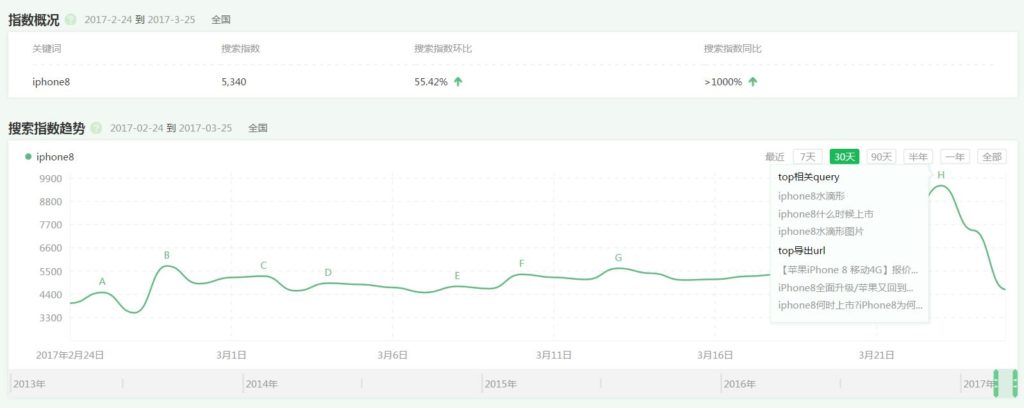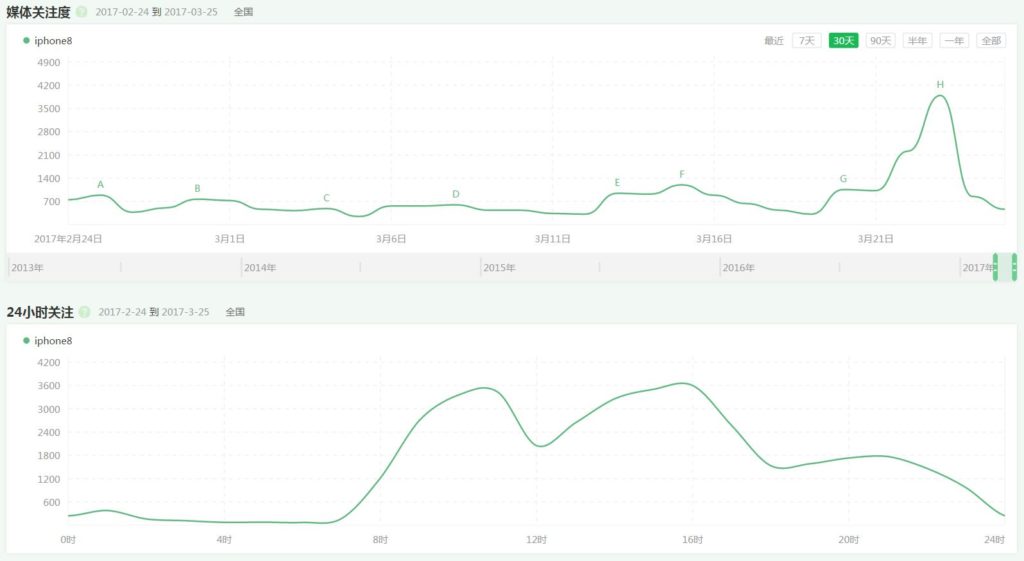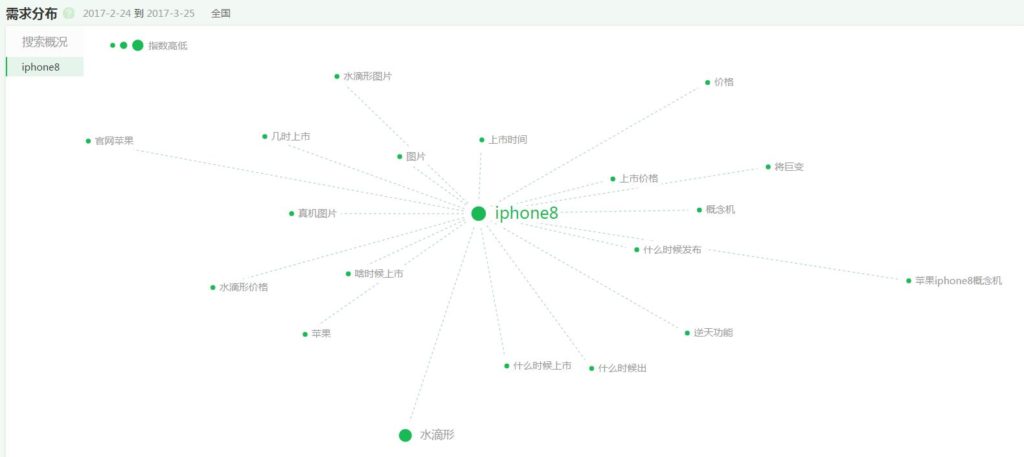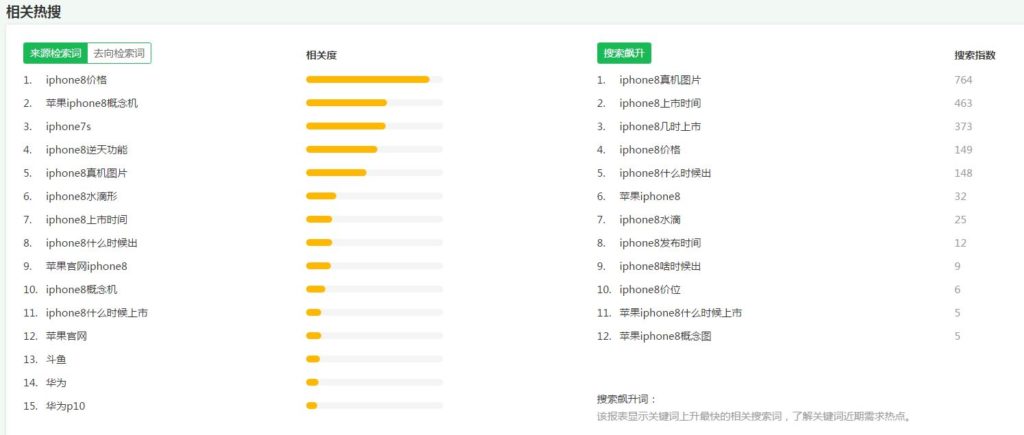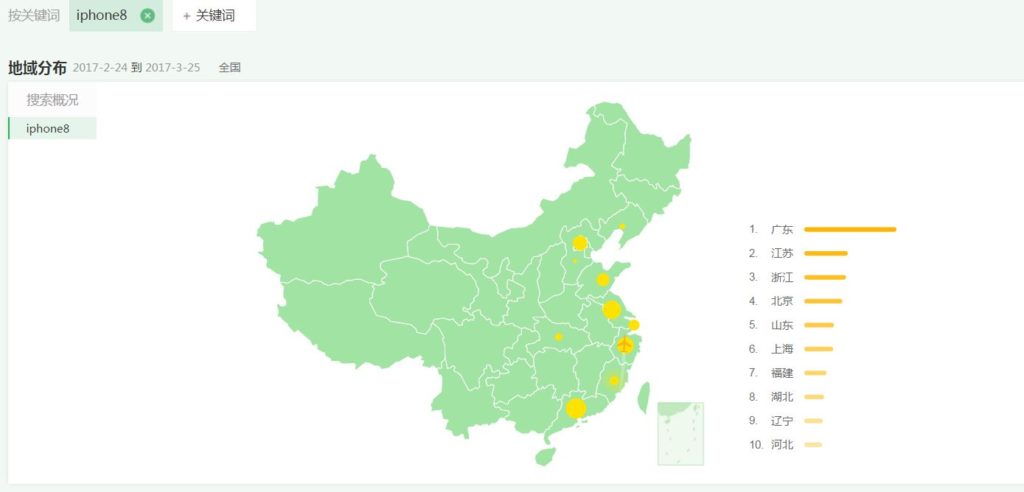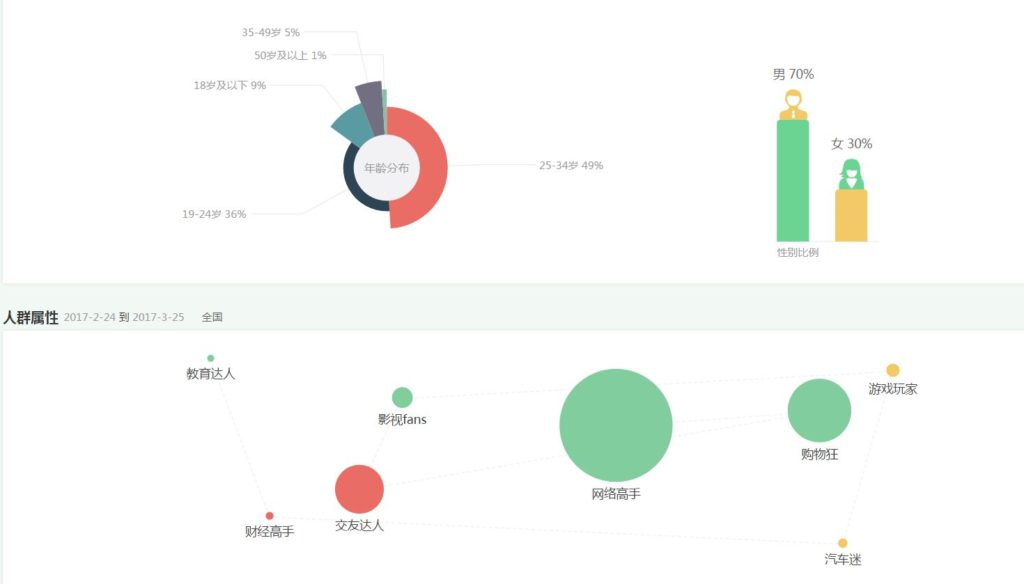Qihoo (360 Search) Index Tutorial
Qihoo, also known as 360Search and So.com, is the second largest Chinese search engine. By various estimates, it holds between 15 to 25% of the search market share and is fairly popular among younger users.
It is also often noted that Qihoo search results tend to be more accurate than Baidu’s and advertising with Qihoo is also a bit cheaper. Despite once posing a real threat to Baidu’s dominance, Qihoo is still trailing Baidu in terms of overall popularity.
Qihoo Index is the keyword research tool that can be used to complement Baidu’s. Also, it doesn’t require registering an account which makes it a bit easier. Other than that, the functionality and the type of data Qihoo Index generates is quite similar to Baidu Index which was covered earlier.
Here we are using the same keyword “iPhone8” to see the results. The first panel presents the total number of searches and the trends overtime. Just like with Baidu Index, the data can be displayed for the last 7, 30 or 90 days as well as for custom date ranges.
The top panel shows 5,340 searches for iPhone 8 over the last 30 days which is about 5 times less searches on Baidu for the same period.
Similar to Baidu, Qihoo index indicates various kinks, peaks and valleys of the curve with a letter corresponding to a specific media mention. Hovering over those letters opens a pop-up with more details on the source linked to an article:
Another Qihoo Index graph specifically focuses on media mentions. Just like with Baidu, each change in the curve can be further examined for more details related to a specific news source.
The graph above displays search activity in the last 24 hours. Quite predictably, the search reaches two of its peaks in the morning and afternoon with a dip in between (a lunch break?) before flattening out during the night hours.
Next diagram shows related keywords in key phrase surrounding the main keyword. Analogous to Baidu, the keywords are grouped based on search volumes and relevant position:
Related searches data displays the keywords searched by users before or after that specific search term. In this case, “iPhone 8 price” was the strongest related key phrase. Also, users seem to be often searching for iPhone 8 pictures:
Also like Baidu, Qihoo Index also shows geographic distribution of searches. It seems that most iPhone 8 related searches were coming from the richest Chinese provinces and cities which reflects traditional popularity of Apple products in those areas.
Insights into audience are largely similar to the results we have seen with Baidu for the same term: men represent the majority (70% vs. 30%). The age brackets used by Qihoo are a bit different with Baidu: almost half of the people interested in iPhone 8 were aged between 25 and 34.
Another dimension that is available only with Qihoo Index is classification of the users by attributes. Apparently, Qihoo uses other search terms attributed to the same user in order to build what is called “persona” in marketing. Learning more about customer profiles through this method can provide further useful insights for a marketer.


